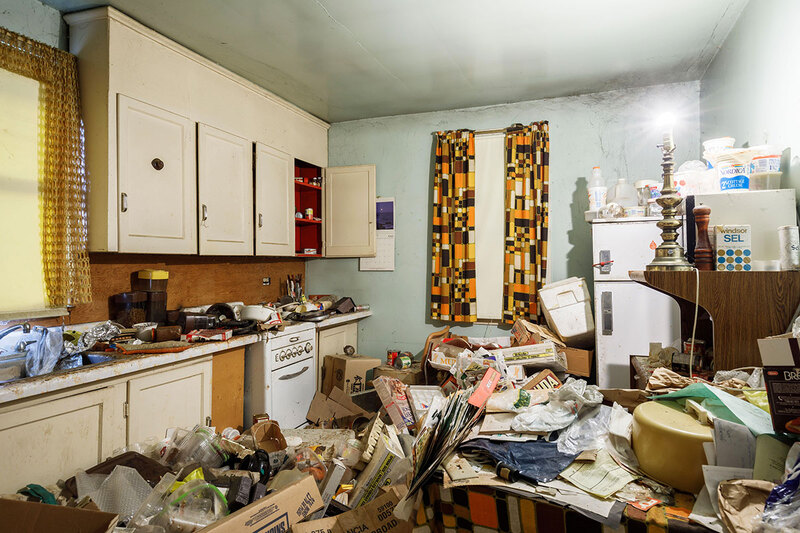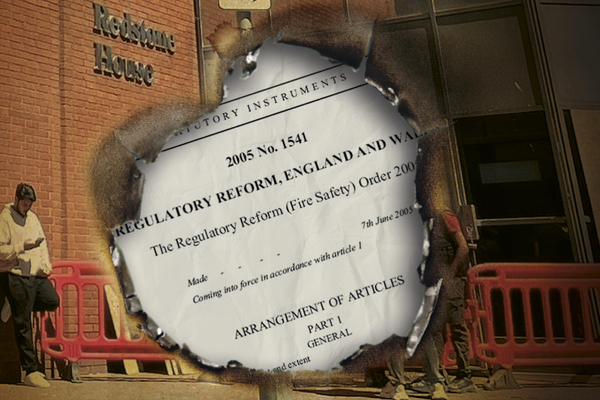CPD module: understanding and addressing hoarding
Hoarding is a challenging issue that in the past was often tackled with enforcement action, but now it is recognised as a mental health issue with complex causes. Lynsey Grundy, tenancy support manager and hoarding specialist at Southway Housing Trust, explains how to identify and support those struggling with hoarding. Read the article, take a test at the bottom of this page, earn CPD minutes

Learning outcomes
After reading this article, learners will be able to:
- Define hoarding
- Detail why hoarding has an impact on well-being and safety
- Describe the impact of hoarding on a) the affected individual, b) their friends and family, and c) the wider community
- Name some of the possible causes of hoarding
- Detail how housing officers and managers, and other customer-facing staff, can best support those struggling with hoarding
- Explain what it means to work in a psychologically informed way
Hoarding can be a challenging issue for social landlords, presenting well-being risks for individuals, neighbouring residents and the landlord in question. In the past, landlords often reacted with enforcement action. However, this fails to recognise that hoarding is a mental health issue with complex causes.
This CPD article considers hoarding. It explores how customer-facing staff at social housing organisations can best identify and support those struggling with hoarding.
What is hoarding?
Hoarding is when someone has an excessive amount of items and a perceived need to keep all of them.
Since 2015, hoarding has been a recognised mental health disorder in itself, often linked to trauma. It is defined as:
- Persistent difficulty discarding or parting with possessions, regardless of their actual value
- That difficulty being due to a perceived need to save the items, and the distress associated with the notion of discarding them
- The difficulty in discarding possessions leading to clutter that restricts living areas from being used for their intended purpose
- Hoarding can also be a symptom of other mental health conditions and/or a consequence of neurodiversity such as autism
Who is affected by hoarded social homes?
A hoarded social home has negative consequences for:
- The individual who has a hoarding issue
- The friends and family of that individual
- The individual’s landlord
- The community in which the individual lives
For the individual, the hoarding may be distressing or embarrassing. They may not want people to see their property and so become socially isolated, which can further compound mental health difficulties.
It also may not be possible to maintain a safe environment in their home, and their life may be impacted by not being able to use rooms for their intended purpose. They may have to sleep on a sofa or on the floor, rather than in their bed, for instance.
The well-being of others living in the property is likely to be affected, and the situation can also understandably be distressing to wider family and friends.
It can often be difficult for social landlords to gain access to hoarded properties, with tenants refusing access out of embarrassment. This causes a safety risk because it becomes impossible to conduct things such as routine gas checks.
Hoarded homes can also represent a serious fire risk. In the event of a fire, exit routes may be blocked by clutter and fires spread much more quickly than they would otherwise – potentially even to other homes. In 2022, the London Fire Brigade attended 1,036 hoarding-related fires. Sadly these fires resulted in 186 injuries and 10 deaths.
In short, hoarding is a risk to well-being on multiple levels.
What causes someone to hoard?
The exact cause of hoarding is unknown, but researchers suggest there are multiple possible contributing factors.
Often there are several reasons why someone hoards. It might be part of being very worried about making mistakes – and deciding what to keep and throw away therefore becomes impossible. It could be a reaction to a traumatic event. For some, it may be rooted in childhood experiences – having lived in hardship or having been emotionally abused or neglected, for instance.
In all examples, hoarding is something that in some way makes the individual feel safe – even if it is actually causing harm.
Is every cluttered or untidy home a hoarded home?
No. The key issue is whether someone experiences distress at the notion of parting with possessions.
Consider someone who is struggling with alcoholism and whose home is full of discarded bottles and cans. Their housing officer suggests arranging for someone to come in and throw away the empty items, and to declutter the home more generally. The tenant immediately takes up the offer and welcomes it. In contrast, when offered the same support, someone struggling with hoarding would react with anxiety about the notion of throwing things away.
Case study: the significance of the toy in the drawer
A tenant was receiving support to sort through their hoarded home. While going through a packed drawer, the support worker found a small, broken toy. The resident was an older person and had no children or pets. The worker gently asked whether this might be an item that could be thrown away.
The tenant immediately burst into tears. When the worker asked why it felt so difficult to contemplate throwing away the toy, the resident explained that she had been given it as a child. It had been a present from the only relative she felt had ever loved her during a traumatic childhood in which she experienced serious neglect.
Keeping the toy kept the connection to the one adult who had cared for her as a child. As the worker further sorted through the hoard, it became clear that much of it was made up of items that would be more expected to belong to a child. For the resident, keeping these items was perhaps a way of trying to address the trauma of her very difficult childhood.
How can housing officers and managers help residents who are struggling with hoarding?
Traditionally, many social landlords have reacted to hoarding with enforcement action. That might have included forcing access into a home to complete a non-optional deep clean, or even evicting someone.
There is now much better understanding of the value of working in a way that is psychologically informed and trauma-informed. This simply means allowing for the possibility that a tenant’s behaviour is a symptom of what has happened to them. Solving the problem then becomes less about reacting to the behaviour than about understanding and reacting to the causes of it.
On identifying a cluttered house, for instance, a psychologically informed reaction would not involve immediately focusing on which part of the tenancy agreement was being breached. Nor would it involve being judgemental about the situation, assuming that the person is lazy or dirty. Instead it would be to acknowledge to the resident that it looks like there is an issue in the property, and to offer to help in addressing it.
In the first instance, that help is likely to be raising the cases with the tenancy sustainment or support team. Most will have specific processes for helping those struggling with hoarding, including potentially referring to other services. These might include people who can help in a very practical sense, by physically working with the tenant to declutter.
By approaching the resident in a non-judgemental, psychologically and trauma-informed way and by offering support, a good outcome for that individual and for the social landlord becomes more likely.
Areas to reflect on
- What was your view on hoarding before you started reading this article? Has your view changed in any way? If so, how and why?
- What one thing could you do to better support those struggling with hoarding?
- What one point in this piece do you want to share with colleagues who may not have read it? How will you share it?
Summary
Hoarding is a mental health issue and one that affects the well-being of the individual, their loved ones and the wider community.
The causes are unclear and complex, but hoarding is never a lifestyle choice – those who hoard experience very real anxiety at the idea of dispensing with any of their possessions.
Understanding this, and that hoarding is a reaction to other issues, is key to being able to offer the best possible support to those living in hoarded homes.
Now get your CPD minutes
Next, answer the questions below. Get all the questions correct and you will receive a certificate confirming your award of 30 CPD minutes within 10 working days via email. Get any questions wrong and you can retake the test by refreshing your web browser.
References and further reading
- Mind (2022), ‘Hoarding’, www.mind.org.uk/information-support/types-of-mental-health-problems/hoarding
- The British Psychological Society (2024), A psychological perspective on hoarding explore.bps.org.uk/content/report-guideline/bpsrep.2024.inf240b
- London Fire Brigade (2023), ‘Firefighters offer support to those with hoarding tendencies over concerns cost of living crisis could increase fire risk’, www.london-fire.gov.uk/news/2023/may/firefighters-offer-support-to-those-with-hoarding-tendencies-over-concerns-cost-of-living-crisis-could-increase-fire-risk/
- Manchester Safeguarding Partnership (2024), ‘Gill’s story’
Latest stories








